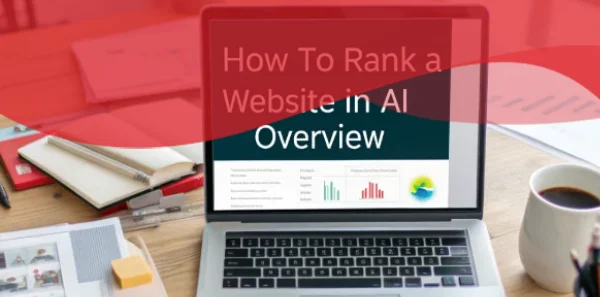The world of SEO is in constant flux, and the latest seismic shift is the rollout and expansion of Google’s AI Overview (formerly Search Generative Experience or SGE). You might be wondering: with AI generating answers directly on the search results page, how can your website not only survive but thrive? Securing a coveted spot as a cited source within these AI-generated summaries is the new frontier for visibility. The good news is that it’s not about entirely new tactics but rather an evolution and amplification of existing best practices. Keep reading to learn how you can strategically position your content to rank in AI Overview and capture valuable user attention.
This comprehensive guide will delve into the mechanics of AI Overviews, explore actionable strategies to optimize your website, highlight the significant benefits of being featured, and outline common pitfalls to avoid. By understanding how Google’s AI curates information and what it prioritizes, you can adapt your SEO efforts for success in this AI-driven search era.
Understanding the AI Overview Phenomenon: The New Digital Forefront
Google’s AI Overview represents a fundamental change in how users receive information from search queries. Instead of just a list of blue links, Google now often presents a summarized, AI-generated answer at the very top of the Search Engine Results Page (SERP). This overview aims to provide a quick, comprehensive answer by synthesizing information from multiple web sources. For users, it means faster access to information; for website owners and SEO professionals, it presents both a challenge and a significant opportunity.
The challenge lies in the potential for AI Overviews to satisfy user queries directly on the SERP, potentially reducing click-through rates to individual websites for some types of searches. However, the immense opportunity is to be one of the cited sources within the AI Overview. These citations, often appearing as links within or alongside the generated text, can drive highly qualified traffic and significantly boost your site’s authority and credibility. Recent data indicates that AI Overviews are appearing for a growing percentage of searches, particularly informational queries. Being prepared for this shift is no longer optional; it’s crucial for maintaining and growing your online presence. Understanding how AI Overviews work is the first step to appearing in them. Google’s AI (powered by models like Gemini) scours its index for relevant, high-quality, and trustworthy information to construct these summaries, prioritizing content that directly and clearly addresses user intent.
Looking for expert SEO services in Toronto to help you rank in AI Overviews? Get Your Free Consultation Today
Strategies to Rank Your Website in AI Overview
Optimizing for AI Overviews isn’t about chasing a new algorithm with fleeting tricks. Instead, it’s about doubling down on high-quality content, exceptional user experience, and strong technical SEO, with specific nuances tailored to how AI processes and presents information. Here’s how to rank a website in AI Overview:
Prioritize High-Quality, E-E-A-T Rich Content
Google’s emphasis on Experience, Expertise, Authoritativeness, and Trustworthiness (E-E-A-T) is even more critical for AI Overviews. AI models are designed to identify and surface information that is reliable and comes from credible sources.
- Demonstrate First-Hand Experience: Share unique insights, case studies, or real-world applications.
- Showcase Expertise: Ensure content is written or reviewed by subject matter experts. Include author bios with credentials.
- Build Authority: Earn backlinks from reputable sites, gain industry recognition, and foster a strong online presence.
- Establish Trustworthiness: Be transparent with your audience. Clearly cite sources, have accessible contact information, and ensure your website is secure (HTTPS). For “Your Money or Your Life” (YMYL) topics, these factors are paramount.
Focus on User Intent and Answer Questions Directly
AI Overviews aim to provide direct answers. Structure your content to facilitate this.
- Understand and Target Search Intent: Identify the underlying questions users are asking. AI Overviews often trigger for informational and “how-to” queries.
- Provide Clear, Concise Answers Upfront: Place direct answers to potential questions early in your content, ideally in the first paragraph or two. Think FAQ-style or “inverted pyramid” structure for key information.
- Use Conversational Language: Write in a natural, clear, and accessible way, mirroring how people ask questions.
- Target Long-Tail Keywords: These often reflect specific questions and are more likely to trigger an AI Overview.
Optimize Content Structure and Formatting
AI models appreciate well-organized content that is easy to parse and understand.
- Logical Headings and Subheadings (H2, H3): Use a clear hierarchy to break down complex topics into digestible sections.
- Bullet Points and Numbered Lists: These formats are frequently pulled into AI Overviews for summaries, steps, or key features. Studies show a high percentage of AI Overviews contain lists.
- Short Paragraphs: Aim for 3-4 sentences per paragraph for better readability.
- Strategic Use of Bold Text: Highlight key terms and phrases, but do so sparingly and naturally.
Implement Technical SEO Best Practices
A strong technical foundation ensures your content is accessible and understandable to search engine crawlers, including AI.
- Structured Data (Schema Markup): Implement relevant schema (e.g.,
FAQPage,HowTo,Article,Person) to provide explicit clues about your content’s meaning. This helps AI categorize and interpret your information accurately. [Link to Google’s Rich Results Test – External] - Mobile-Friendliness: With Google’s mobile-first indexing, a responsive and fast-loading mobile site is essential.
- Page Speed: Optimize images, leverage browser caching, and minimize code to ensure quick loading times. Slow pages are unlikely to be favored.
- Crawlability and Indexability: Ensure Google can easily find and index your important content. Submit sitemaps via Google Search Console. [Link to a relevant internal blog post about Google Search Console, if available]
- Internal Linking: Create strong internal links between related pieces of content to establish topical authority and help AI understand the relationships between your pages.
Build Topical Authority
Demonstrating comprehensive knowledge around a specific subject can significantly increase your chances of being featured.
- Create Content Clusters: Develop a main pillar page for a broad topic and link out to more specific cluster pages that delve into subtopics in detail.
- Cover Topics Comprehensively: Address various facets of a subject, anticipating follow-up questions.
- Regularly Update Content: Keep your information current and accurate. Outdated information is a red flag.
Understand the Impact of Zero-Click Searches on Your SEO.
The Tangible Benefits of Ranking in AI Overviews
Securing a citation in a Google AI Overview isn’t just a vanity metric; it translates to real advantages for your website and brand. While the direct answer in the SERP might address some users’ needs, many will click through for more in-depth information, especially for complex topics.
- Increased Visibility and Brand Authority: Being featured as a source in an AI-generated answer positions your brand as an authority on the topic. This “position zero” (or even above traditional position zero) placement is prime digital real estate.
- Potential for Higher Quality Traffic: Users clicking through from an AI Overview are often further along in their information-gathering journey and are looking for more detailed, authoritative content. This can lead to higher engagement rates and better conversion potential. One study suggested that while overall clicks might decrease for some queries, the traffic that does come through is often more qualified.
- Competitive Edge: As AI Overviews become more prevalent, businesses that successfully optimize for them will gain a significant advantage over competitors who are slow to adapt.
- Reinforcement of Organic Rankings: Often, the sources cited in AI Overviews are already ranking well in traditional organic results. Optimizing for AI Overviews can, therefore, have a synergistic effect on your overall SEO performance.
| Feature | Traditional SERP Click | AI Overview Click (Cited Source) |
|---|---|---|
| Initial Exposure | Below ads/other SERP features | Top of SERP, within AI summary |
| User Intent | Varies, may be Browse | Often seeking deeper understanding |
| Perceived Authority | Inferred from ranking | Directly endorsed by AI as a source |
| Traffic Quality | Broad | Potentially higher, more qualified |
| Content Expectation | Standard webpage experience | Expects comprehensive, cited info |
Common Mistakes to Avoid When Targeting AI Overviews
While the strategies above pave the path to success, certain missteps can hinder your efforts to rank in AI Overview. Understanding these common mistakes with Google AI Overview optimization is key.
- Ignoring E-E-A-T: Publishing thin, low-quality, or untrustworthy content is a surefire way to be overlooked. This is a critical factor for SGE ranking factors.
- Keyword Stuffing Instead of Semantic Relevance: AI is sophisticated. Focus on natural language and comprehensively covering the topic rather than unnaturally forcing keywords when trying to achieve generative AI search visibility.
- Neglecting Content Structure: Large blocks of text without clear headings or lists are harder for AI to parse and less likely to be featured when you want to improve your chances of getting featured in AI snapshots.
- Poor Technical SEO: If Google can’t efficiently crawl, index, or understand your site (e.g., due to slow speed or no structured data), your chances diminish.
- Focusing Only on Short-Tail Keywords: While important, long-tail, question-based queries are prime candidates for triggering AI Overviews. Think about content strategies for AI Overviews that answer specific questions.
- Not Updating Old Content: Stale information will not be seen as authoritative by AI; EEAT for AI search demands currency.
Sum Up
The rise of Google’s AI Overview is a clear indicator of the direction search is heading. Rather than viewing it as a threat, savvy marketers and website owners should see it as an evolution and a new avenue for discoverability. By focusing on the core tenets of excellent SEO—high-quality, user-centric content, robust E-E-A-T signals, clear structure, and strong technical foundations—you can significantly improve your chances to rank in AI Overview.
The strategies outlined in this post, from crafting directly answerable content to leveraging structured data, are not just for AI; they contribute to a better user experience overall, which has always been Google’s ultimate goal. Start implementing these optimizations today, monitor your performance, and adapt as this technology continues to evolve. The future of search is here, and by proactively optimizing for AI Overviews, you can ensure your website remains a visible and authoritative voice in your niche.
FAQs
Is ranking in AI Overview the same as a featured snippet?
While similar in that they provide direct answers, AI Overviews are more comprehensive, often synthesizing information from multiple sources, whereas featured snippets usually pull from a single source. Optimizing for featured snippets is still a good strategy as the principles often overlap with SGE optimization.
Can I pay to be included in AI Overviews?
Organic AI Overview citations are earned, not paid. However, Google is experimenting with Ads within AI Overviews, which is a separate consideration for paid search strategies. The core of getting featured in AI snapshots organically relies on quality.
How long does it take to see results for AI Overview ranking?
Like traditional SEO, results take time and consistent effort. There’s no fixed timeline for ranking in AI Overview, as it depends on competition, your industry, and the quality of your implementation.
Will AI Overviews eliminate the need for websites?
Unlikely. While AI Overviews provide summaries, users will often need more detailed information, specific data, or to engage further with a brand, which necessitates clicking through to websites. The role of websites may evolve to provide deeper value beyond surface-level answers, making content for AI Overviews a crucial bridge.






